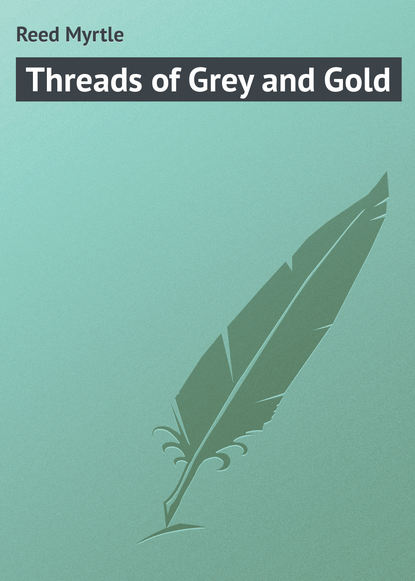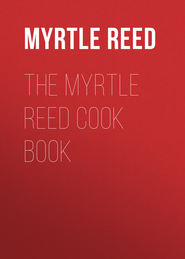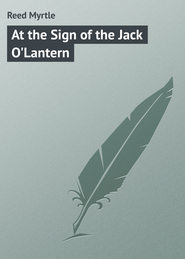По всем вопросам обращайтесь на: info@litportal.ru
(©) 2003-2024.
✖
Threads of Grey and Gold
Настройки чтения
Размер шрифта
Высота строк
Поля
Rightfully first among the world’s splendid coronets stands the State Crown of England. It was made in 1838 with jewels taken from old crowns and others furnished by command of the Queen.
It consists of diamonds, pearls, rubies, sapphires, and emeralds, set in silver and gold. It has a crimson velvet cap with ermine border; it is lined with white silk and weighs about forty ounces. The lower part of the band above the ermine border consists of a row of one hundred and ninety-nine pearls, and the upper part of this band has one hundred and twelve pearls, between which, in the front of the crown, is a large sapphire which was purchased for it by George IV.
At the back is a sapphire of smaller size and six others, three on each side, between which are eight emeralds. Above and below the sapphires are fourteen diamonds, and around the eight emeralds are one hundred and twenty-eight diamonds. Between the emeralds and sapphires are sixteen ornaments, containing one hundred and sixty diamonds. Above the band are eight sapphires, surmounted by eight diamonds, between which are eight festoons, consisting of one hundred and forty-eight diamonds.
In the front of the crown and in the centre of a diamond Maltese cross is the famous ruby of the Black Prince. Around this ruby to form the cross are seventy-five brilliant diamonds. Three other Maltese crosses, forming the two sides and back of the crown, have emerald centres, and each contains between one and two hundred brilliant diamonds. Between the four Maltese crosses are four ornaments in the form of the French fleur-de-lis, with four rubies in the centre, and surrounded by rose diamonds.
From the Maltese crosses issue four imperial arches, composed of oak leaves and acorns embellished with hundreds of magnificent jewels. From the upper part of the arches are suspended four large pendant pear-shaped pearls, with rose diamond caps. Above the arch stands the mound, thickly set with brilliants. The cross on the summit has a rose cut sapphire in the centre, surrounded by diamonds.
A gem is said to represent “condensed wealth,” and it is also condensed history. The blood of a ruby, the faint moonlight lustre of a pearl, the green glow of an emerald, and the dazzling white light of a diamond – in what unfailing magic lies their charm? Tiny bits of crystal as they appear to be – even the Orloff diamond could be concealed in a child’s hand – yet kings and queens have played for stakes like these. Battle and murder have been done for them, honour bartered and kingdoms lost, but the old magic beauty never fades, and to-day, as always, sin and beauty, side, by side, are mirrored in the flash of a jewel.
The Coming of My Ship
Straight to the sunrise my ship’s sails are leaning,
Brave at the masthead her new colours fly;
Down on the shore, her lips trembling with meaning,
Love waits, but unanswering, I heed not her cry.
The gold of the East shall be mine in full measure,
My ship shall come home overflowing with treasure,
And love is not need, but only a pleasure,
So I wait for my ship to come in.
Silent, half troubled, I wait in the shadow,
No sail do I see between me and the dawn;
Out in the blue and measureless meadow,
My ship wanders widely, but Love has not gone.
“My arms await thee,” she cries in her pleading,
“Why wait for its coming, when I am thy needing?”
I pass by in stillness, all else unheeding,
And wait for my ship to come in.
See, in the East, surrounded by splendour,
My sail glimmers whitely in crimson and blue;
I turn back to Love, my heart growing tender,
“Now I have gold and leisure for you.
Jewels she brings for thy white breast’s adorning,
Measures of gold beyond a queen’s scorning” —
To-night I shall rest – joy comes in the morning,
So I wait for my ship to come in.
Remembering waters beat cold on the shore,
And the grey sea in sadness grows old;
I listen in vain for Love’s pleading once more,
While my ship comes with spices and gold.
The sea birds cry hoarsely, for this is their songing,
On masthead and colours their white wings are thronging,
But my soul throbs deep with love and with longing,
And I wait for my ship to come in.
Romance and the Postman
A letter! Do the charm and uncertainty of it ever fade? Who knows what may be written upon the pages within!
Far back, in a dim, dream-haunted childhood, the first letter came to me. It was “a really, truly letter,” properly stamped and addressed, and duly delivered by the postman. With what wonder the chubby fingers broke the seal! It did not matter that there was an inclosure to one’s mother, and that the thing itself was written by an adoring relative; it was a personal letter, of private and particular importance, and that day the postman assumed his rightful place in one’s affairs.
In the treasure box of many a grandmother is hidden a pathetic scrawl that the baby made for her and called “a letter.” To the alien eye, it is a mere tangle of pencil marks, and the baby himself, grown to manhood, with children of his own, would laugh at the yellowed message, which is put away with his christening robe and his first shoes, but to one, at least, it speaks with a deathless voice.
It is written in books and papers that some unhappy mortals are swamped with mail. As a lady recently wrote to the President of the United States: “I suppose you get so many letters that when you see the postman coming down the street, you don’t care whether he has anything for you or not.”
Indeed, the President might well think the universe had gone suddenly wrong if the postman passed him by, but there are compensations in everything. The First Gentleman of the Republic must inevitably miss the pleasant emotions which letters bring to the most of us.
The clerks and carriers in the business centres may be pardoned if they lose sight of the potentialities of the letters that pass through their hands. When a skyscraper is a postal district in itself, there is no time for the man in grey to think of the burden he carries, save as so many pounds of dead weight, becoming appreciably lighter at each stop. But outside the hum and bustle, on quiet streets and secluded by-ways, there are faces at the windows, watching eagerly for the mail.
The progress of the postman is akin to a Roman triumph, for in his leathern pack lies Fate. Long experience has given him a sixth sense, as if the letters breathed a hint of their contents through their superscriptions.
The business letter, crisp and to the point, has an atmosphere of its own, even where cross lines of typewriting do not show through the envelope.
The long, rambling, friendly hand is distinctive, and if it has been carried in the pocket a long time before mailing, the postman knows that the writer is a married woman with a foolish trust in her husband.
Circulars addressed mechanically, at so much a thousand, never deceive the postman, though the recipient often opens them with pleasurable sensations, which immediately sink to zero. And the love-letters! The carrier is a veritable Sherlock Holmes when it comes to them.
Gradually he becomes acquainted with the inmost secrets of those upon his route. Friendship, love, and marriage, absence and return, death, and one’s financial condition, are all as an open book to the man in grey. Invitations, cards, wedding announcements, forlorn little letters from those to whom writing is not as easy as speech, childish epistles with scrap pictures pasted on the outside, all give an inkling of their contents to the man who delivers them.
When the same bill comes to the same house for a long and regular period, then ceases, even the carrier must feel relieved to know that it has been paid. When he isn’t too busy, he takes a friendly look at the postal cards, and sometimes saves a tenant in a third flat the weariness of two flights of stairs by shouting the news up the tube!
If the dweller in a tenement has ingratiating manners, he may learn how many papers, and letters are being stuffed into the letter-box, by a polite inquiry down the tube when the bell rings. Through the subtle freemasonry of the postman’s voice a girl knows that her lover has not forgotten her – and her credit is good for the “two cents due” if the tender missive is overweight.
“All the world loves a lover,” and even the busy postman takes a fatherly interest in the havoc wrought by Cupid along his route. The little blind god knows neither times nor seasons – all alike are his own – but the man in grey, old and spectacled though he may be, is his confidential messenger.
Love-letters are seemingly immortal. A clay tablet on which one of the Pharaohs wrote, asking for the heart and hand of a beautiful foreign princess, is now in the British Museum. But suppose the postman had not been sure-footed, and all the clay letters had been smashed into fragments in a single grand catastrophe! What a stir in high places, what havoc in Church and State, and how many fond hearts broken, if the postman had fallen down!
“Nothing feeds the flame like a letter,” said Emerson; “it has intent, personality, secrecy.” Flimsy and frail as it is, so easily torn or destroyed, the love-letter many times outlasts the love. Even the Father of his Country, though he has been dead this hundred years or more, has left behind him a love-letter, ragged and faded, but still legible, beginning: “My Dearest Life and Love.”
“Matter is indestructible,” so the scientists say, but what of the love-letter that is reduced to ashes? Does its passion live again in some far-off violet flame, or, rising from its dust, bloom once more in a fragrant rose, to touch the lips of another love?
In countless secret places, the tender missives are hidden, for the lover must always keep his joy in tangible form, to be sure that it was not a dream. They fly through the world by day and night, like white-winged birds that can say, “I love you” – over mountain, hill, stream, and plain; past sea and lake and river, through the desert’s fiery heat and amid the throbbing pulses of civilisation, with never a mistake, to bring exquisite rapture to another heart and wings of light to the loved one’s soul.
Under the pillow of the maiden, her lover’s letter brings visions of happiness too great for the human heart to hold. Even in her dreams, her fingers tighten upon his letter – the visible assurance of his unchanging and unchangeable love.
When the bugle sounds the charge, and dimly through the flash and flame the flag signals “Follow!” many a heart, leaping to answer with the hot blood of youth, finds a sudden tenderness in the midst of its high courage, from the loving letter which lies close to the soldier’s breast.
Bunker Hill and Gettysburg, Moscow and the Wilderness, Waterloo, Mafeking, and San Juan – the old blood-stained fields and the modern scenes of terror have all alike known the same message and the same thrill. The faith and hope of the living, the kiss and prayer of the dying, the cries of the wounded, and the hot tears of those who have parted forever, are on the blood-stained pages of the love-letters that have gone to war.
“Ich liebe Dich,” “Je t’aime,” or, in our dear English speech, “I love you,” – it is all the same, for the heart knows the universal language, the words of which are gold, bedewed with tears that shine like precious stones.
Every attic counts old love-letters among its treasures, and when the rain beats on the roof and grey swirls of water are blown against the pane, one may sit among the old trunks and boxes and bring to light the loves of days gone by.
The little hair-cloth trunk, with its rusty lock and broken hinges, brings to mind a rosy-cheeked girl in a poke bonnet, who went a-visiting in the stage-coach. Inside is the bonnet itself – white, with a gorgeous trimming of pink “lute-string” ribbon, which has faded into ashes of roses at the touch of the kindly years.











